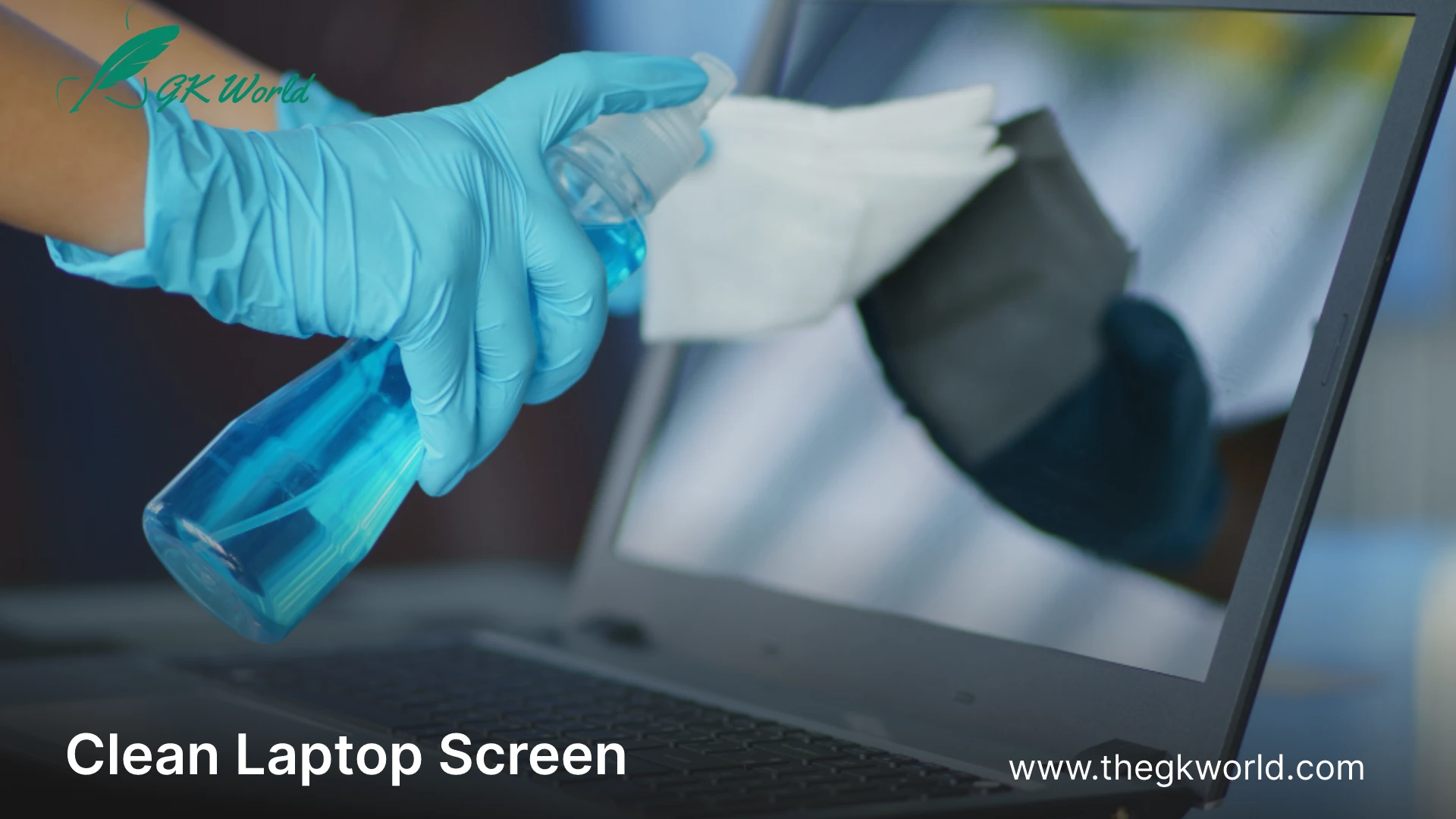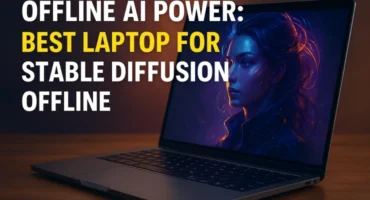
You only need a clean cloth and cleaning solution for general laptop monitor screen cleaning. Switching it off, removing the battery, and unplugging any power sources before cleaning the screen is advisable. Although it might seem excessive, any erroneous movement could result in serious harm. When working with electronics, our motto has always been “Better safe than sorry.”
Getting Ready for Cleaning
Before you start, make sure you follow these procedures to ensure a good laptop screen cleaning.
Switch off and disconnect your laptop.
Turn off and disconnect your laptop from the power source before cleaning. Because cleaning electronic equipment while it’s turned on could result in electrocution, this is vital for safety reasons. Additionally, interior damage from moisture leaking into live parts is avoided by unplugging the gadget. Moreover, it has a black screen that helps reveal smudges, dust, and other particles.
If you’re experiencing persistent issues with your device, understanding how to factory RESET HP laptops can be a game-changer. This process restores your laptop to its original settings, resolving software glitches and improving performance. Follow our comprehensive guide to ensure a smooth reset process.
Assemble Cleaning Supplies
You’ll need distilled water, white vinegar, and a microfiber cloth as cleaning tools. Microfiber wipes are particularly safe and effective since they will remove dust and other small particles without causing any damage to the screen’s surface. Steer clear of anything abrasive or rough because light can amplify even the smallest scratches on the screen.
Regular cleaning supplies sometimes include harsh chemicals like ammonia, which can obscure or discolor the screen’s surface. However, cleaning distilled water and white vinegar is more effective and safer.
Through the process of distillation, minerals that may leave residues on screens are removed, thereby purifying distilled water. Because of its purity, it is safer for electronics and less likely to cause harm if it accidentally comes into contact with internal parts.
White vinegar is a gentle acid with antibacterial properties and works well to dissolve grime and fingerprints from screens. It offers a streak-free clean when combined with distilled water, guaranteeing that screens stay clear and sanitized.
Start to Clean
This is a brief, step-by-step tutorial on cleaning a laptop screen
Dusting off Loose Particles
Dust off any loose particles from the screen with the dry microfiber cloth to start your cleaning procedure. Lightly wipe in a circular motion, paying special attention to any visible dirt or dust. Note that pushing onto the screen with excessive pressure may cause damage to the pixels.
Create a Cleaning Solution If Needed
To remove stubborn fingerprints or smudges, mix equal parts distilled white vinegar and distilled water to make a basic solution. Deionized water is usually preferable to regular tap water because the former includes minerals and tiny particles that could damage or discolor the screen’s surface.
Dampen the Microfiber Cloth
You want the cloth to be damp, not wet, so dip the corner into the cleaning solution and wring off any extra liquid. The intention is to reduce the likelihood that the liquid may leak into the laptop and harm internal components.
Wipe the Screen
You have to wipe the screen in a circular motion, starting at the top and gradually moving down, using the damp portion of the cloth. Take your time and be thorough, but try not to get too saturated since this could cause moisture damage to the screen’s margins.
Allow the screen to air dry after cleaning. Should any streaks persist, carefully remove them with a dry portion of the microfiber cloth.
What to avoid
- You have to avoid wiping the screen with paper towels, toilet paper, tissue paper, or even your shirt. The likelihood of these non-ultrasoft materials scratching the display is high.
- Cleaning agents that contain ammonia (such as Windex®), ethyl alcohol (Everclear®), alcohol intended for human consumption, toluene (paint solvents), acetone, or ethyl acetate (which are frequently found in nail polish remover) should be avoided while cleaning LCDs. The explanation is straightforward: these substances may react with the components that make up or cover the screen.
Discover the easiest way to master a fundamental computer skill by reading our detailed guide on How to COPY and PASTE on a Laptop. This step-by-step tutorial will help you become proficient in no time. Check out our post for a quick and efficient learning experience!
Other Cleaning Tips
When cleaning your laptop’s screen, remember the following suggestions to prolong its life and maximize its performance:
- Keep an eye out for moisture since too much wetness can harm the complex components of your laptop. As such, make sure your fabric isn’t too wet and doesn’t allow any moisture to penetrate the screen’s edges.
- Learn about the features of your laptop’s screen. Understanding whether the glass-coated surface of your screen is LCD, LED, or non-LCD can help you select the right cleaning products and methods.
- Take note of the manufacturer’s instructions. A specific polishing cloth is needed for certain modern models, such as Apple’s nano-texture glass screens, and it should be used exclusively for cleaning purposes. Observing the guidelines provided by the manufacturer will shield your laptop’s monitor screen from accidental damage.
- Remember to periodically clean your laptop’s screen as well as your keyboard and mouse. Considering how often we come into contact with these surfaces, they may be contaminated. To clear the dust from these spots, a dry microfiber cloth works well most of the time.
FAQS
Should I Clean My Laptop’s Screen with Glass or Window Cleaners?
Glass and window cleaners include chemicals that might harm the screen’s fragile surface or remove its protective coatings, so it is not a good idea to use them on your laptop screen. Remain with utilizing a soft, lint-free cloth dampened with distilled water or an electronic device screen cleaner made especially for them.
Question 1
How often my laptop’s monitor screen should be cleaned?
At the very least, once a week, clean your laptop’s screen to avoid fingerprints and smudges.
Question 2
Can I spray the cleaning solution?
Avoid immediately spritzing liquid onto the screen. Always use the cleaning solution to slightly wet a microfiber towel before gently wiping the screen.
Question 3
Conclusion
Maintaining a clean laptop screen enhances your experience, keeps your device in top condition, and protects your investment. On top of that, the satisfaction deriving from a smudge and dust-free screen is obvious.
So remember, a clean screen is not just a pleasure to look at, it’s also a critical component of laptop maintenance. The process of how to clean a laptop screen is straightforward if you consistently follow the correct steps.








Leave a Comment